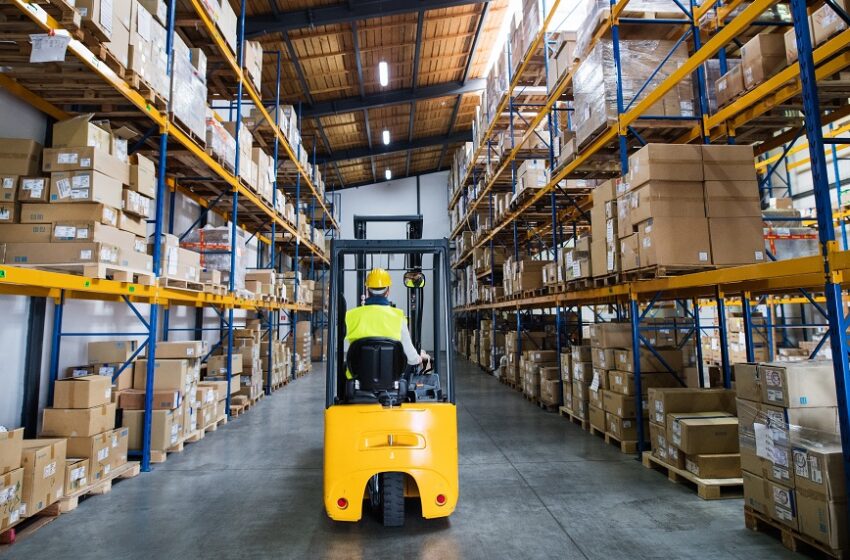Warehouse Organization Tips to Maximize Efficiency

A well-organized warehouse can lead to increased productivity, reduced operational costs, and improved customer satisfaction. Whether you’re managing a large distribution center or a small storage facility, planning and managing that space can make a significant difference in your line of work. To succeed, try following these essential warehouse organization tips to maximize efficiency in your warehouse, reduce operational costs, and enhance overall productivity.
1. Perform safety and employee training
Besides making sure that the equipment is of the utmost quality and from a reliable source, like MLA Holdings, a safe and well-trained workforce is equally essential for an efficient warehouse. Start by performing regular safety checks to identify and address potential hazards. Then, ensure that your employees are trained in proper lifting techniques, equipment operation, and emergency procedures.
Also, providing safety gear and enforcing safety protocols is not optional but a necessity to minimize accidents and injuries. If possible, invest in ongoing employee training to improve their skills and productivity. Moreover, implementing cross-training of employees to perform various warehouse tasks is a great way to ensure flexibility in your workforce and encourage them to suggest efficiency-enhancing ideas.
2. Optimize layout and flow
The foundation of an efficient warehouse starts with its layout and flow. It’s crucial to design a layout that minimizes unnecessary movements and maximizes space exploitation. To achieve this, begin by categorizing your products based on their frequency of use or popularity.
For example, place high-demand items closer to the shipping area to reduce picking time and increase order fulfillment speed. Invest in clear signage and floor markings to guide workers efficiently and safely through the warehouse. Additionally, implement a systematic approach, such as the “ABC” method, where products are categorized as A, B, or C items based on their importance.
3. Implement an inventory management system
Keep in mind that an effective inventory management system is the backbone of a warehouse organization. Invest in technology that allows you to track inventory levels in real-time, automate reordering processes, and maintain accurate stock records. With a robust inventory management system, you can reduce the risk of overstocking or running out of critical items, ultimately saving time and money.
In addition to this, make sure to regularly conduct cycle counts and spot checks to ensure the accuracy of your inventory data. This will help you identify and address any discrepancies promptly. Additionally, categorize your inventory by Stock Keeping Unit (SKU) or product type, making it easier for employees to locate items and fulfill orders efficiently.
4. Use vertical space
Warehouses often have significant vertical space that can end up underutilized. To maximize efficiency, consider using tall shelving units, pallet racks, and mezzanines to take full advantage of the whole space. Implementing vertical storage not only increases the warehouse’s capacity but also allows for better organization and accessibility.
However, make sure to label shelves clearly and use bin locations to help employees locate items quickly. By optimizing vertical space, you can reduce clutter on the warehouse floor, making it easier for employees to move and work, decreasing the risk of accidents.
5. Streamline order picking
Efficient order picking is a critical aspect of warehouse operations. So, before your warehouse is open for business, you should consider implementing strategies like batch picking, zone picking, or wave picking, depending on the size and complexity of your warehouse.
For instance, batch picking involves picking multiple orders at once, while zone picking assigns specific areas to different pickers. On the other hand, wave picking organizes orders into waves for more efficient fulfillment. To improve accuracy and speed in order picking, invest in pick-to-light or pick-to-voice systems, as well as properly train your staff to use these systems effectively. Moreover, organize your warehouse to minimize travel distances for pickers, reducing the time it takes to fulfill orders.
Final thoughts
Efficient warehouse organization is a continuous process that involves optimizing layout and flow, utilizing vertical space, implementing an inventory management system, and streamlining order picking. These five warehouse organization tips can maximize efficiency in your warehouse by providing safe, practical, and optimized conditions to work and handle goods. After all, a well-organized warehouse also ensures timely and accurate order fulfillment, leading to satisfied customers and a stronger competitive advantage in the market.